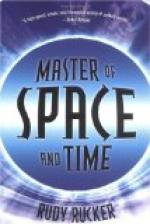XV
TELEGRAPHING WITHOUT WIRES
The First Suggestion—Morse
Sends Messages Through the
Water—Trowbridge
Telegraphs Through the Earth—Experiments
of
Preece and Heaviside in England—Edison
Telegraphs from Moving
Trains—Researches
of Hertz Disclose the Hertzian Waves.
Great as are the possibilities of the telegraph and the telephone in the service of man, these instruments are still limited to the wires over which they must operate. Communication was not possible until wires had been strung; where wires could not be strung communication was impossible. Much yet remained to be done before perfection in communication was attained, and, though the public generally considered the telegraph, and the telephone the final achievement, men of science were already searching for an even better way.
The first suggestion that electric currents carrying messages might some day travel without wires seems to have come from K.A. Steinheil, of Munich. In 1838 he discovered that if the two ends of a single wire carrying the electric current be connected with the ground a complete circuit is formed, the earth acting as the return. Thus he was able to dispense with one wire, and he suggested that some day it might be possible to eliminate the wire altogether. The fact that the current bearing messages could be sent through the water was demonstrated by Morse as early as 1842. He placed plates at the termini of a circuit and submerged them in water some distance apart on one side of a canal. Other plates were placed on the opposite side of the waterway and were connected by a wire with a sensitive galvanometer in series to act as a receiver. Currents sent from the opposite side were recorded by the galvanometer and the possibility of communication through the water was established. Others carried these experiments further, it being even suggested that messages might be sent across the Atlantic by this method.
But Bell’s greatest contribution to the search for wireless telegraphy was not his direct work in this field, but the telephone itself. His telephone receiver provided the wireless experimenters with an instrument of extreme sensitiveness by which they were able to detect currents which the mirror galvanometer could not receive. While experimenting with a telephone along a telegraph line a curious phenomenon was noticed. The telephone experimenters heard music very clearly. They investigated and found that another telegraph wire, strung along the same poles, but at the usual distance and with the usual insulation, was being used for a test of Edison’s musical telephone. Many other similar tests were made and the effect was always noted. In some way the message on one line had been conveyed across the air-gap and had been recorded by the telephones on the other line. It was decided that this had been caused by induction.




